Have you ever heard of Le Marche region? I am Italian, and I have visited the region only three times in 31 years. Yet, it could very well be one of Italy’s very few unspolit regions. And in the region, there is a very special gem. Come and visit Mount Conero with us!
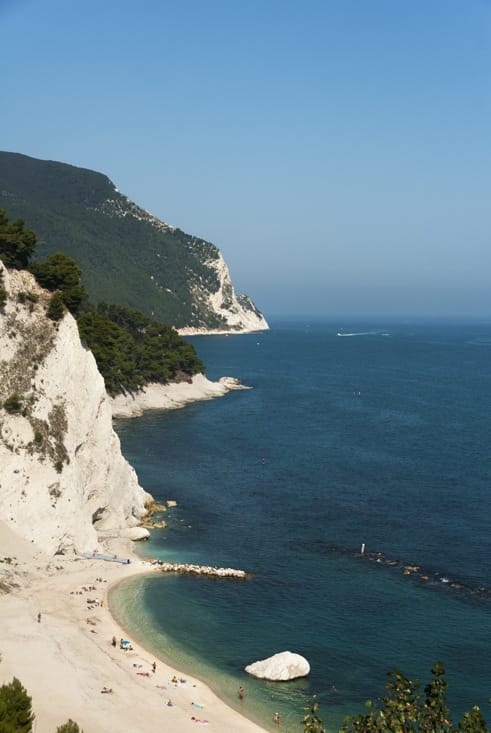
Where are Le Marche and Mount Conero?
Just pull out a map of Italy, and have a look. You’ll be familiar with the boot shape, but I bet you’ve never looked at it closely. Concentrate on the two coasts. The West Coast is jagged, surrounded by mountains and dotted by islands. The East – or Adriatic – coast is straight and flat, all the way from Venice in the north to Gargano, the spur of the boot, in the south. It’s a long, sandy beach.
I remember my geography teacher at school telling us that one could walk all the way from Venice to Gargano without leaving the beach. Were it not for Mount Conero.

What is Mount Conero? It’s a rocky promontory that rises apparently our of nowhere. Seemingly a geological oddity, it’s in fact the easternmost stretch of the Apennines and the only place besides Gargano on the Adriatic coast where a mountain touches the sea. Despite being only 572 meters high, Mount Conero deserves indeed to be called a ‘mountain’. It rises majestically from the flat, low-lying surrounds, with limestone cliffs dropping all the way to the coast below.
Mount Conero is in Le Marche region, on the Adriatic coast in Central Italy. It’s a region of hills, wineries, historic villages and a delicious food. It’s been dubbed ‘the new Tuscany’, but it’s still relatively undiscovered. You won’t have to worry about crowds and tacky souvenirs. Visit Le Marche in low season, for example in October or May, and you’ll be have pretty villages and wonderful nature all for yourself.
Why visit Mount Conero?
If you’re touring around Italy, or you’re an Italy resident looking for a place to spend the weekend, the Mount Conero area is an absolute treat. Here are our top 5 reasons to visit Mount Conero – but as always, dig deeper and you’ll find dozens more.
#1 – The Colours of the Sea

Quite simply, the coast around Mount Conero is amazing. Despite being only a few dozen kilometres from the heavily-touristed stretch of Adriatic coast between Rimini and Senigallia, it’s a whole different world. Forget muddy beaches chockablock with sun loungers and screaming kids.
We visited on a late summer weekend and the beaches were all but empty, save for a handful of locals catching the last rays of sun. We walked along the beach of Portonovo, Mount Conero just behind us, past the Torre de Bosis, a 18th century watchtower built by order of the pope to protect the coast against pirate raids.
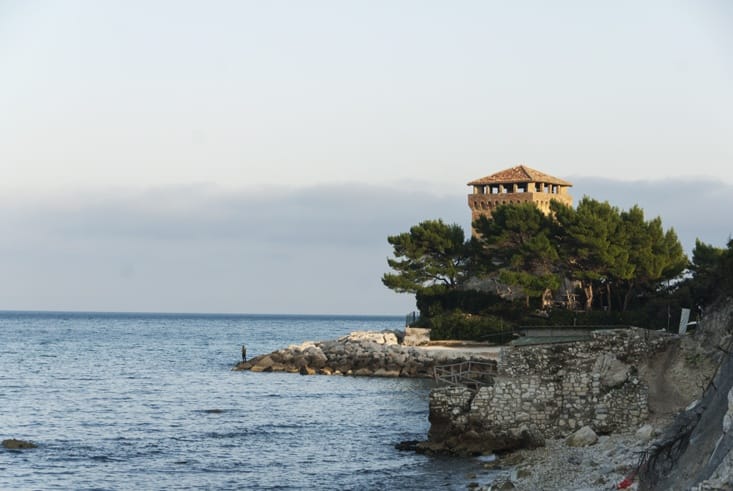
The sea was what amazed us the most. It was pale blue, calm, and transparent. The colour you usually associate with places like the Maldives or Tahiti. The beach was shimmering white pebbles, the colour of Mount Conero rocks, painted golden by the sunset.
The following day, we walked around the hiking paths on Mount Conero. In the morning sun, the sea was a deep turquoise, criss-crossed by the white spray of motorboats and jet skis. From the top, it looked like an abstract painting.

#2 – Santa Maria di Portonovo
This cute little church is a short distance away from Portonovo beach. It’s an example of Romanesque architecture, built in 1034 by a group of monks. The church is built out of Conero stone, a white kind of limestone. We were told that from the sea, bathed by the shimmering sun, the church looks like a sugar cube.
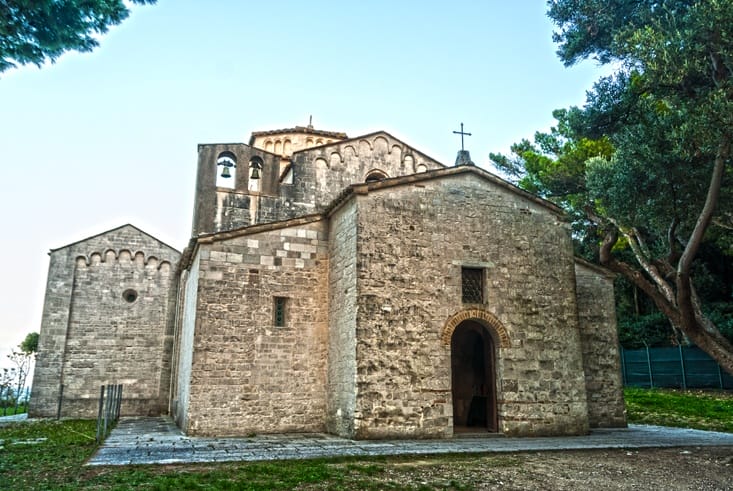
Visiting the inside, we were shown that the church is in fact a blend of Byzantine and Romanesque architecture. We sat for a while, listening to the wind blow and the waves crash around us.
I was never one for churches, but Santa Maria di Portonovo really amazed me, for the elegance in its simplicity and the beautiful position, surrounded by maquis, with Mount Conero behind and the sea in front.
Walking back from the church, we briefly stopped at a small lake, called Lago Profondo (deep lake). A local legend talks of the existence of a small underground river, called Budello del Profondo, connecting the lake to the sea in Porto Recanati, further south. Evil noblemen that practiced the ius primae noctis (the feudal right of sleeping with brides on their first wedding night), were killed by a local secret sect and thrown into the lake, their corpses never to be found, washed through the river into the Adriatic, and beyond.
#3 Trekking on Mount Conero
At 572 meters high, Mount Conero perhaps shouldn’t be called a mountain; according to textbook definitions, a mountain is at least 700 meters high. Conero rises so high and steep from the flat coastal landscape, that calling it a ‘hill’ simply doesn’t cut it.
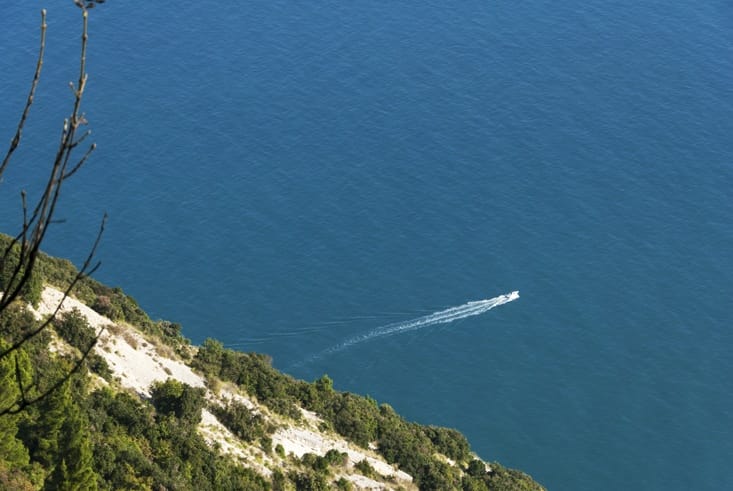
From climbing to trekking and wildlife-viewing (if you’re lucky), there are plenty of activities available on the mountain itself. There are 18 walking trails of varying length and difficulty, some of which can also be travelled on horseback or mountain bike. The most beautiful of all is perhaps the trail termed ‘Due Sorelle/Passo del Lupo’, a 5 hour trek taking in a wonderful viewpoint over the ‘two sisters’, twin rocks emerging from the sea, in front of a beautiful beach that can only be reached by boat.
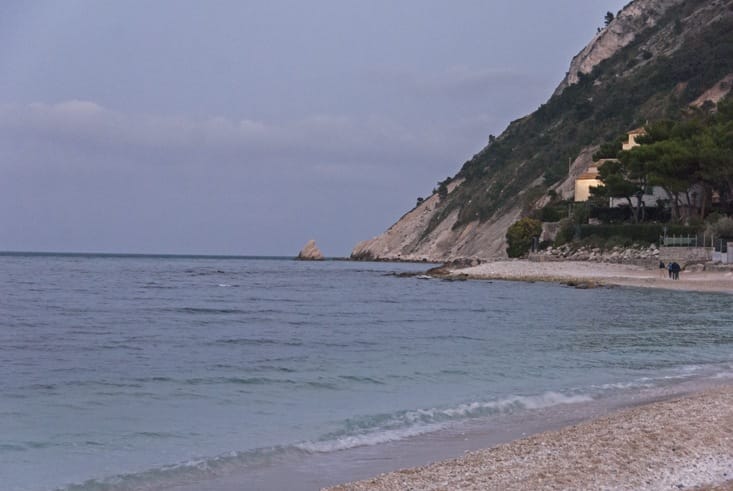
Unfortunately, we didn’t have the chance to do the Due Sorelle trek. We did a short walk from the Badia di San Pietro, a church near the summit. We walked to a viewpoint over the sea from where, on a clear day, it’s possible to see Croatia. We walked past several corbezzolo trees, common on the mountain, and believed to be the origin of the name Conero (from the greek koneros, the name of the tree).

#4 The villages of Numana and Sirolo
If trekking is not your thing, I’m sure villages are. The twin villages of Sirolo and Numana are a great way to spend an afternoon or so, wandering around and taking in beautiful views over the coast.
Sirolo is one of those places that people usually picture when thinking of Italy, a medieval village all narrow streets and cobbled courtyards. The best thing to do is just walk around, sit at an outdoors café and watch local life. The beautiful Piazzetta, just in front of the San Nicola di Bari church, offers a stunning view on Mount Conero and the beaches below.

Numana is so close to Sirolo, no one really knows where one begins and the other one ends. It’s a popular summer destination, but in October its famous beaches were quiet and relaxing. Numana is rich in history; in Roman times, it used to be a busy port on the Eastern trade routes, before being repeatedly sacked and abandoned in the Middle Ages. Within the last century, it made the transition from old fishermen’s village to seaside holiday destination. Its beaches and tourist harbour are surrounded by clear, green blue waters, the cleanest in this stretch of coast.
#5 Loreto
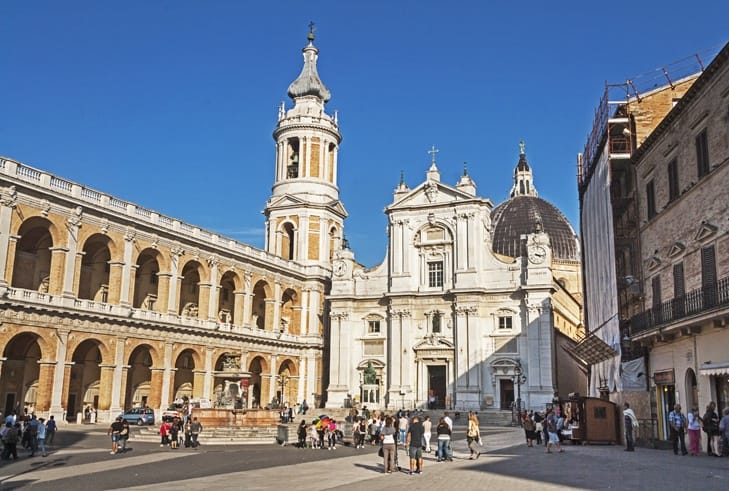
Loreto is not on Mount Conero, but it’s so close it may well be included. It’s located a few kilometres south of the mountain, on top of a hill, surrounded by a panorama of hills covered in vineyards. At first glance, it looks like a village like many others. Were it not for a very special sight; la Basilica della Santa Casa, a beautiful baroque church supposedly containing the Holy House of Nazareth, where the Virgin Mary lived and received the Annunciation.
Loreto is among the world’s prime pilgrimage destination, on par with the Basilica del Pilar of Zaragoza, and the famous churches of Medjugorie and Czestochova. Even if you’re not religious, the Basilica is worth a visit for its wonderful works of art and its architecture, resembling a fortress.

Where to stay near Mount Conero
If you’re looking for a special place to stay near Mount Conero, look no further than Hotel Fortino Napoleonico, a luxury hotel housed in a (yes, you guessed it) Napoleon-era fort. The garden is a wonderful place to while away an afternoon in style, and the fort’s ramparts offer amazing views of Mount Conero and the beach, which can be reached by a secret hidden passageway dating back to Napoleon times.

We were guests of the Marche Tourism Board as part of the #ILikeMarche blog trip. As always, all opinions are our own.
